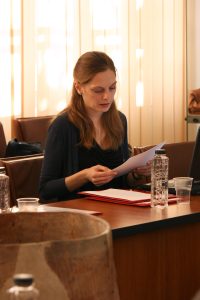Considerations regarding the Morlach migrations from Dalmatia to Istria and the Venetian settlemed policy during the XVIth century
Ius Valachicum – International Conference
Bucharest, 20 – 21 October 2014
The Turkish offensive in Balkans often determined various human groups to search for a new life outside the borders of the Ottoman Empire. In Dalmatian hinterland, administrated by Venice since the beginning of XVth century, the Morlachs are those who, together with Serbs, Croatians, Bosnians, etc. choose to accept the Venetian protection against the non-Christian danger.
On its side, the St. Mark′s Republic needs more and more new people to repopulate various regions hardly affected by wars, plagues and drought. During the XVIth century Serenissima establishes the rules of the internal migrations (from one region to another of Stato da Mar) and its settlement policy for the poorly habited areas and their new colonists.
The encouragement and the development of the population transfer from Dalmatia to Istria represents an aspect of the Venetian policy in balancing the demography of the state. Arrived from the inner Balkans, the Morlachs accept quite often to settle in the south – western Istria, because the benefits and the exemptions offered by the Republic which are not to be ignored: exemptions from fees for using the public pasturelands, the right to build settlements in empty spaces, exemptions from fees for transport or reductions from some of the administrative taxes. Even if these benefits are temporaries or became permanent, they use to increase the number of Morlach migrations from Dalmatia in Istria. In effect, as the documents attest, during the XVIth century plenty of Morlach settlements appear in the hinterland of the Istrian cities, like: Rovigno, Umago, Pinguente, Montona, Cittanova, Villanova, Raspo, Parenzo etc. Despite of the fact that sometimes the Morlachs choose to leave the new settlements and turn back in Turchia, the numerous settlements colonized and inhabited by them justify, up to some extent, the existence of an Istrian Morlacchia.
Paper published here.

